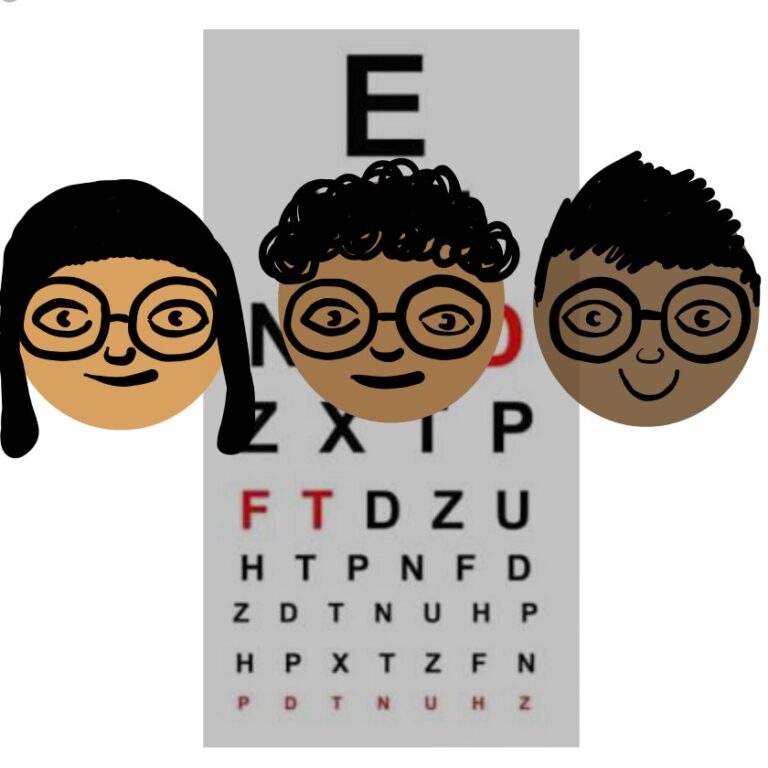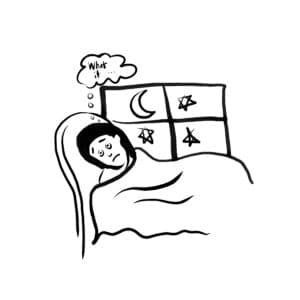
How Going Gluten-Free Transformed our Home
Hi, I’m Melissa, Beth asked me to explain how going gluten-free made a difference in our household. I have a

Behavioural optometry is a specialised field of optometry. It looks at how the brain process what the eyes see. Whereas a standard optometrist checks sight and eye health, a behavioural optometrist focuses on the brain-eye connection.
First, the optometrist checked Harry for Irlen Syndrome.
A paper published in 2017 discussed the link between eye conditions and dyslexia. Ophthalmic abnormalities in children with dyslexia: A look at current research, reviewed research into Meares-Irlen syndrome, eye strain and visual stress. Below is a quote showing these types of visual disturbances occur in dyslexic and non-dyslexic children.
“About one-third of dyslexic children complain of eyestrain and/or visual distortions (“visual stress”) while reading. These symptoms (sometimes termed as Meares-Irlen syndrome) include seeing letters moving on the page, blurring or forming strange patterns, spatial distortions, frequent blinking, losing one’s place on the page, and headache, which generally get worse the longer child tries to read.
Bright lights, fluorescent lights, or glossy paper often make the symptoms worse while reading.
Some optometrists have claimed that these symptoms can be alleviated using coloured overlays (transparencies) or tinted spectacle lenses as they reduce the pattern glare of letters. The afflicted child is asked to read text (black ink written on white paper) after placing on the text a coloured sheet of transparent plastic (coloured overlay). A wide array of coloured overlays, singly and in combination, is employed to find the most suitable colour as per the child’s specific subjective preference.
It is important to remember that although dyslexic children are more likely to complain of visual stress while reading, these symptoms can also occur in non-dyslexic children.”[2]
Harry didn’t have Irlen Syndrome.
Next, the optometrist carried out a Schoolvision test.
Here is some information about Schoolvision taken from the optometrists’ website.
“The whole concept of stable eye dominance and its importance was discovered in early studies in sports, namely clay pigeon shooting and tennis. Shooting is an “aiming’ sport (involving central vision), and tennis is an anticipation sport where depth judgement is the most important to assess positioning in the 3-D spatial environment. It was subsequently found that the same principles of “Sportvision” could be applied to reading, and hence “Schoolvision” emerged.” [3]
I am fascinated by the logic behind Schoolvision. In my book, I discuss the importance of having a lead-ear. If the right ear isn’t the lead-ear, a delay occurs in processing sound. It turns out that the eyes are similar. Harry had a squint when he was a baby, and although it self-corrected, his eyes never learned to work together, and he didn’t develop a lead-eye. Getting a Schoolvision prescription was a way for him to develop a dominant eye. Here’s why having a dominant eye is essential:
“When we read a piece of text, just one eye (the dominant eye) should take over the job of aiming at the words. If both eyes are competing to do the same job, the words and letters appear to shift out of order, sending confusing messages to the brain, which causes difficulty with reading and spelling. Without stable eye dominance, attention will continually swap from one eye to the other. At the moment of swapping, the letter or word will shift position in space.
You can demonstrate this by aiming at a distant object with your finger. When you close one eye, everything remains stable. If you close the other eye, either your finger or the object will appear to move. When this happens while reading, you lose your place in the sentence or paragraph, and individual words become difficult to learn or spell because the letters won’t stay in the right order.” [4]
When Harry failed the Schoolvision test, I bought him prescription spectacles to strengthen his eye dominance. He reads quicker when he wears his glasses, can follow text, and easily find his place on the next line but, of course, getting him to wear them in class isn’t always easy.
Did you know it is possible to have visual disturbances when reading and not have dyslexia because certain eye conditions present with dyslexia-like symptoms?
Eyes turning inwards or outwards cause symptoms similar to dyslexia, but these problems have a muscular rather than neurological basis. The good news is spectacles and eye exercises will correct these issues.
In my book, Dyslexia. Wrestling with an Octopus, I used this definition of dyslexia from a 2009 UK government report.
“Dyslexia is a learning difficulty that primarily affects the skills involved in accurate and fluent word reading and spelling. Characteristic features of dyslexia are difficulties in phonological awareness, verbal memory, and verbal processing speed. Dyslexia occurs across the range of intellectual abilities. It is best thought of as a continuum, not a distinct category, and there are no clear cut-off points.”[5]
Dyslexia affects around 10-15% of the population, and visual dysfunction often accompanies the condition. If your child exhibits some of the following dyslexic traits, think about having them assessed for dyslexia.
Jeremy Fox, the optometrist who did Harry’s Schoolvision check, estimates up to half the general population has some form of visual dysfunction that may cause underachievement in reading.
If your child has difficulty reading, it is essential to have them checked for visual dysfunction by a behavioural optometrist. Corrective lenses can cure standard visual difficulties, but they will not cure dyslexia.
Dyslexia is a neurological condition that requires educational intervention such as the Orton-Gillingham approach.(This is an affiliate link for a free e-book on the power of the Orton-Gillingham approach).
To read how to teach spelling and reading in 30 minutes a day, click here.
Speechify is an app that can help dyslexic children as it reads online text. Here is my affiliate link.
[1] Karande S, Agarwal A. Ophthalmic abnormalities in children with dyslexia: A look at current research. J Postgrad Med. 2017;63(1):1-3. doi:10.4103/0022-3859.198138 https://www.ncbi.nlm.nih.gov/pmc/articles/PMC5394809/
[2] Karande S, Agarwal A. Ophthalmic abnormalities in children with dyslexia: A look at current research. J Postgrad Med. 2017;63(1):1-3. doi:10.4103/0022-3859.198138 https://www.ncbi.nlm.nih.gov/pmc/articles/PMC5394809/
[3] https://www.anstice.co.nz/SchoolVision/
[4] https://www.anstice.co.nz/SchoolVision/
[5] Rose J (2009). Identifying and teaching children and young people with dyslexia and literacy difficulties. An independent report for the UK Department for Children, Schools and Families (DCSF). https://dera.ioe.ac.uk//14790/

Hi, I’m Beth. Seven years ago, when I discovered my son had dyslexia, I had a ‘light-bulb’ moment and understood this explained many of my own difficulties. Ever since, I’ve been on a mission to discover the best ways to wrestle what I like to call the dyslexia octopus.

Hi, I’m Melissa, Beth asked me to explain how going gluten-free made a difference in our household. I have a

It’s 4 AM and I’m going over what happened to Harry at school yesterday, wondering how best to help. My
3 Responses
Please be very careful mentioning Irlens syndrome . There is no evidence that it works and it’s not recommended by the The Royal Australian and New Zealand Ophthalmologists who guides us. If you wish to see the report I am happy to forward it to you.
Thank you Sharon. I’d love to see the report. Harry was tested for Irlen Syndrome which is why I mention it in this article. I appreciate your comment.
Hi Sharon, there is in fact many peer reviewed articles, research studies, and SPECT brain scans that show the difference in the brain function of a person with Irlen syndrome reading with and without their Irlen filters. The comments from RANZCO were made by the president at the time and they did not research Irlen syndrome before they made their statement. I myself have Irlen syndrome and I can personally without reservation say that my Irlen glasses have made a massive impact on my learning and day to day life. I can also provide you with a response to the RANZCO statement with clear evidence supporting Irlen syndrome.